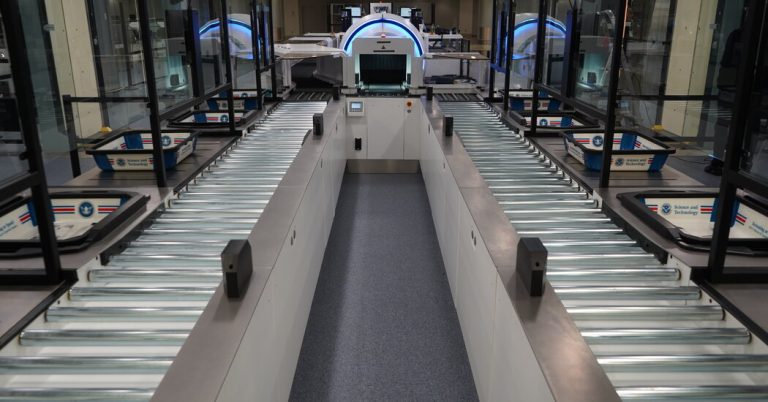As most air travelers can attest, the experience at an airport security checkpoint can be anything but calm. There are many rules—often shouted by Transportation Security Administration officers—about what you can bring, how to arrange your belongings, and where to stand. Lines can be painfully long and tensions high. And throughout the process there are security officers.
But at Harry Reid International Airport in Las Vegas, a new kind of security screening, unveiled by the TSA on Wednesday, is driven by the passengers themselves.
The system, which uses video screens, facial recognition software and body scanners, is not about shaving off travel time, but about improving the overall passenger experience, said Christina Peach, deputy assistant administrator for requirements and capabilities at the TSA .
“Individuals want to be able to complete the screening process at their own pace and with minimal interaction with our officers,” he said.
The new pilot officially opens to the public on March 11. Here’s what you need to know.
Where is it located and who can use it?
The self-service check-in process, which is only available to travelers with TSA PreCheck clearance, will be available in two security lanes within the “Innovation Checkpoint” at Harry Reid International Airport in Las Vegas. (The airport tests emerging technologies and new processes at a six-lane “Innovation Checkpoint.”)
Traditional security screening will continue to be available for passengers.
How does the check work?
As a traveler approaches the security lanes, a screen will display instructions on how to place personal items in the bins and what items to remove (electronics and belts, for example). With a camera function on a small tablet, facial recognition technology will first be used to verify your identity.
You will then go to a drop off station, the area next to the conveyor belt where you leave your belongings and put them in a bin. There are two stations per lane, allowing two passengers to use the lane at the same time. Video screens at each station will play step-by-step instructions. The aim is to get one bin per passenger, Ms Peach said.
You will push your bin onto the conveyor belt, which then moves the bin to be scanned. After that, you’ll go through a body scanner that looks like a glass box.
If a bin is flagged, it is routed to a different route and a TSA officer will conduct a search.
Once you receive your bag, you can drop the empty bin and it will automatically return to the stack.
Will TSA officers be around?
TSA personnel will still be on hand, but not as many of them manning the screening lanes. On any given day, there are usually between 10 and 15 officers working the six lanes of the Innovation Checkpoint, Ms Peach said.
Now, some may be remote. Passengers who need extra help can press a button to speak to an officer via a video screen, and officers will still handle security raids and extra baggage checks.
How long does the screening last?
It will vary, based on each passenger’s pace, Ms Peach said.
When does the pilot end? Will it move to other airports?
The initial pilot is expected to run for several months. Ms Peach stressed that it was a prototype and that the service would collect data and feedback from passengers.
Some elements of the system, however, may eventually leak into checkpoints across the country, he said.
Will the future of security screening be without the physical presence of TSA officers?
TSA officers will always work at security checkpoints, Ms. Peach said, whether they are standing next to passengers or working at remote screening locations.
“Officers are their most valuable assets,” he said of the government service. “It’s really about having the officer as part of the system, even if they’re not as visible.”
Follow New York Times Travel on Instagram and subscribe to the Travel Dispatch weekly newsletter to get expert tips to travel smarter and inspiration for your next vacation. Dreaming of a future getaway or just an armchair trip? Take a look at ours 52 places to go in 2024.




